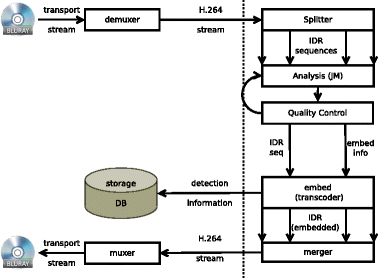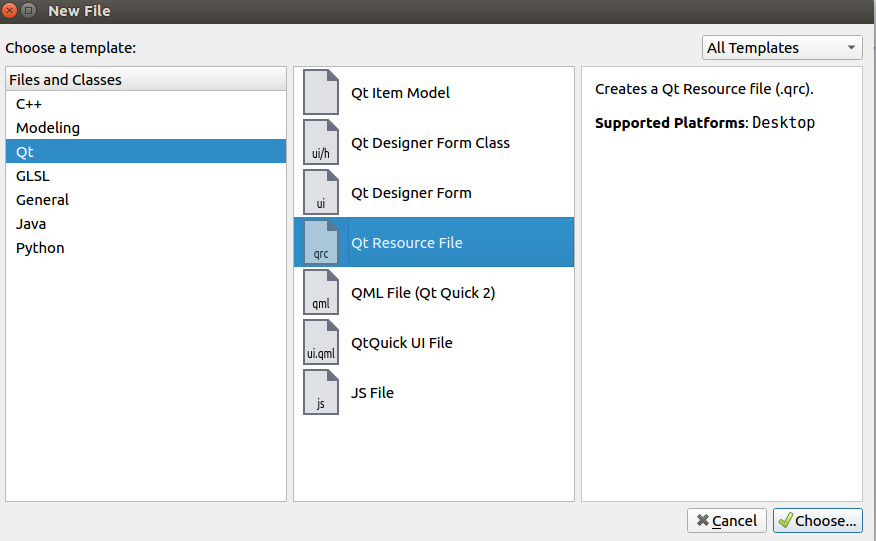
Invalid Ue Golomb Code Opencv
I want to upload a camera image to a GpuMat without unnecessary copy operations.I get the image as a naked char. from the camera API and at the moment convert it to a GpuMat approximately like this:isGetImageMem(hCam, (void.)pLast);tmpI = cvCreateImageHeader(cvSize(iWidth, iHeight), IPLDEPTH8U, 1);tmpI-imageData = pLast;Mat M = cv::cvarrToMat(tmpI);GpuMat gM.upload(M);Is this the 'optimal' way to do it without copying data around? The CPU memory gets overwritten by the camera next time around, is this OK after I uploaded it to the GPU?Thanks!
Hi,There is a python package available for controlling Raspberry Pi camera called picamera(which exposes all the options available in raspistill(need to access/change the 'sensor mode' (which changes the resolution) for capturing. I am using openCV (C) for my application but there is no option to change 'sensor mode' available in `cv::VideoCapture::set`. There is a field of `CVCAPPROPMODE` but that is not the same. So my question is:1. Is there a way to change the 'sensormode' in openCV?2.
If not, then is there a Calternative available likepicamera(If not, then is there a way to use this python package in my C program? Hello,i just wanted to ask about your advise.I need to use the SGBM (semi-global block matcher) to get a accurate disparity map.The SBM (stereo block matcher) is delivering quite bad and unuseful results.The problem is just, that it seems that SGBM is not implemented in OpenCV CUDA yet (but the SBM).But i need the SGBM to work faster (for example on the GPU).Would you say it is possible to implement it in CUDA in a few days with not much experience in CUDA C programming?And is it btw a good idea to implement it, or are the for example already good alternatives for it? I am still trying to figure out a proper way to use solvePnP.
Can someone tell me what if input 3D coordinates for solvePnP is not regular distributed, will the returned pose estimation still accurate? The experiment I did is assigning 3D coordinates to randomly distributed feature points on a poster and take a sequence of pictures while I move straight toward the poster. The resulted camera's XYZ coordinates are a bit jumpy.For the record, I did conduct the following operations to derive camera pose.Mat R;Rodrigues(rvec, R);R = R.t;tvec = -R.tvec;By the way, the 3D coordinates values that I assigned are a bit high. Some values are range over couple thousand while some are couple hundreds. Hello,i'm using opencv3.1 with python2.7 in ubuntu 16 to stream a video using Videocapture, but i got corrputed frame also i have those message when i run my pyhton script:Invalid UE golomb codeh264 @ 0x6087f80 cabac decode of qscale diff failed at 110 37h264 @ 0x6087f80 error while decoding MB 110 37, bytestream 1778h264 @ 0x4a7aa80 left block unavailable for requested intra4x4 mode -1 at 0 9h264 @ 0x4a7aa80 error while decoding MB 0 9, bytestream 8318what that dos mean!!Thank youLafi. TAPI absolute beginner here. I ported my CV code to make use of UMat intstead of Mat since my CPU was on it's limit, especially morphologic operations seemed to consume quite some computing power.I cannot see any changes in my framerate, it is exactly the same no matter if I use TAPI or not, also Process Explorer reports no GPU usage whatsoever.
Invalid UE golomb code. Post by fatetrader » Mon Aug 15, 2016 10:41 pm. Is there and option to disable this during the work, it slows down the work significantly. Exp-Golomb Code 참고: 이론과 실무의 조화 '코덱의 세계로의 초대' (박기현 저, 흥릉과학출판사) Exp-Golomb Code는 Exponential Goloms Codes 의 약자로 규칙적인 구조를 가지는 가변 코드입니다.
I did a small test with a few calls of dilation and closing on a full HD image - no effect.Did I miss something I have to do in order to enable TAPI? I'm using the latest OpenCV 3.2 build for Windows and a GTX 980 with driver 378.49.
`cv::ocl::haveOpenCL` and `cv::ocl::useOpenCL` both return `true` and `cv::ocl::Context::getDefault.device( 0 )` also gives me the correct device, everything looks good.Any ideas? Are there any how-to's, best practices or common pitfalls for using TAPI?

The CISA Vulnerability Bulletin provides a summary of new vulnerabilities that have been recorded by the (NIST) (NVD) in the past week. NVD is sponsored by CISA. In some cases, the vulnerabilities in the bulletin may not yet have assigned CVSS scores.
Please visit NVD for updated vulnerability entries, which include CVSS scores once they are available.Vulnerabilities are based on the (CVE) vulnerability naming standard and are organized according to severity, determined by the (CVSS) standard. The division of high, medium, and low severities correspond to the following scores:.: vulnerabilities with a CVSS base score of 7.0–10.0.: vulnerabilities with a CVSS base score of 4.0–6.9.: vulnerabilities with a CVSS base score of 0.0–3.9Entries may include additional information provided by organizations and efforts sponsored by CISA. This information may include identifying information, values, definitions, and related links. Patch information is provided when available. Originlab pro licence key crack. Please note that some of the information in the bulletin is compiled from external, open-source reports and is not a direct result of CISA analysis.
Irrlicht dev c download for mac. Click 'Start'. Click on 'Orwell Dev C', then click 'Remove/Uninstall.' Click on 'Control Panel'. Click 'Yes' to confirm the uninstallation.How do I uninstall Orwell Dev C in Windows XP?. Click the Add or Remove Programs icon.
Medium Vulnerabilities PrimaryVendor - ProductDescriptionPublishedCVSS ScoreSource & Patch Infoarm - cortex-aSystems with microprocessors utilizing speculative execution and indirect branch prediction may allow unauthorized disclosure of information to an attacker with local user access via a side-channel analysis.2018-01-04arm - cortex-aSystems with microprocessors utilizing speculative execution and indirect branch prediction may allow unauthorized disclosure of information to an attacker with local user access via a side-channel analysis of the data cache.2018-01-04. Severity Not Yet Assigned PrimaryVendor - ProductDescriptionPublishedCVSS ScoreSource & Patch Infoadvantech - webaccessA SQL Injection issue was discovered in WebAccess versions prior to 8.3. WebAccess does not properly sanitize its inputs for SQL commands.2018-01-05not yet calculatedadvantech - webaccessAn Improper Input Validation issue was discovered in Advantech WebAccess versions prior to 8.3. WebAccess allows some inputs that may cause the program to crash.2018-01-05not yet calculatedadvantech - webaccessAn Untrusted Pointer Dereference issue was discovered in Advantech WebAccess versions prior to 8.3.
There are multiple vulnerabilities that may allow an attacker to cause the program to use an invalid memory address, resulting in a program crash.2018-01-05not yet calculatedadvantech - webaccessA Stack-based Buffer Overflow issue was discovered in Advantech WebAccess versions prior to 8.3. There are multiple instances of a vulnerability that allows too much data to be written to a location on the stack.2018-01-05not yet calculatedadvantech - webaccessA Path Traversal issue was discovered in WebAccess versions prior to 8.3. An attacker has access to files within the directory structure of the target device.2018-01-05not yet calculatedandroidsvgandroidsvgAndroidSVG version 1.2.2 is vulnerable to XXE attacks in the SVG parsing component resulting in denial of service and possibly remote code execution2018-01-03not yet calculatedapache - deltaspike-jsfThe Apache DeltaSpike-JSF 1.8.0 module has a XSS injection leak in the windowId handling. The default size of the windowId get's cut off after 10 characters (by default), so the impact might be limited. A fix got applied and released in Apache deltaspike-1.8.1.2018-01-04not yet calculatedapache - ofbizThe BIRT plugin in Apache OFBiz 16.11.01 to 16.11.03 does not escape user input property passed.
This allows for code injection by passing that code through the URL.